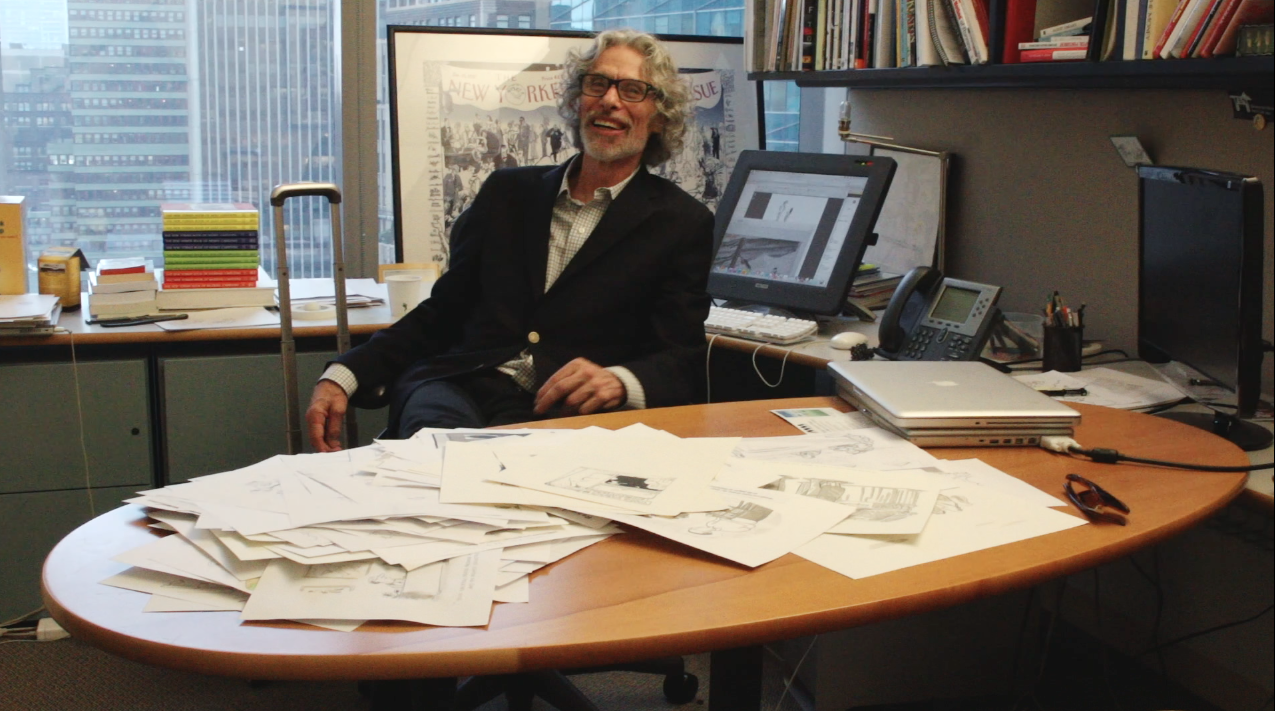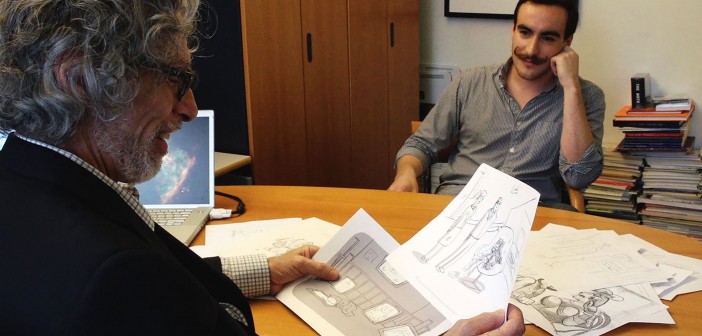The Design Film Festival drew to a successful close last weekend. Amid all the great offerings this year, I chose to watch Very Semi-Serious, which was on the closing day of the Design Film Festival Singapore.
Following the rising popularity of documentary films that look behind the scenes, Very Semi-Serious is set at the venerable The New Yorker cartoon department and looks at how the staff bring together cartoons for the magazine. Directed by first-time feature director Leah Wolchok, the film reminds one of another popular documentary on media publications: The September Issue. While The September Issue follows Anna Wintour, the famed Vogue magazine editor-in-chief, Very Semi-Serious shadows Bob Mankoff, the cartoon editor of The New Yorker.
 Although Mankoff gets quite a bit of laughs from the job, he shows that the life of a cartoon editor is not all fun and games; it takes a mixture of a shrewd mind, a sharp eye and a sensitive spirit to excel. He meets up with his troupe of cartoonists weekly to examine their submissions for the New Yorker. Some of the meetings shuffle by quickly as he dismisses piece after piece of painstakingly drawn cartoons, while others are received with elation and a firm congratulatory handshake. It is not immediately discernible exactly how he chooses which cartoon to buy, but the answer is revealed in time.
Although Mankoff gets quite a bit of laughs from the job, he shows that the life of a cartoon editor is not all fun and games; it takes a mixture of a shrewd mind, a sharp eye and a sensitive spirit to excel. He meets up with his troupe of cartoonists weekly to examine their submissions for the New Yorker. Some of the meetings shuffle by quickly as he dismisses piece after piece of painstakingly drawn cartoons, while others are received with elation and a firm congratulatory handshake. It is not immediately discernible exactly how he chooses which cartoon to buy, but the answer is revealed in time.
Wolchok exposes us to a range of cartoonists: from the aspirational Liana Finck who tries to get her cartoons published to veterans like George Booth who published his first cartoon in the New Yorker in 1969. It recalls the demise of cartoons in magazines over the years and also highlights the struggles of being a cartoonist today. We see them juggling day jobs to get by, such as being a teacher, a furniture mover and even a pattern model. One of them points out that living in New York makes it very difficult for them to make their ends meet, but it is the only way they would be able to make regular contributions to the New Yorker. Here, the bittersweet feeling of living the dream, while not living the dream, is almost tangible.
It is not just about the punchline, the intricacies of the illustration or the comedic value of the cartoonist’s work. Mankoff digs deep into the character of the cartoonist to try discern who they are and what their cartoon is trying to say. In many ways, he looks at them like writers and helps them to discover and define, and encourages them to pursue their inner voice.
“Try and give me 10 ideas a week and do it for a year; then you’ll find what you really want to say,” Mankoff advises the cartoonists.
Phrases like “Is this one-off … is this an expression of your personality?” also gets thrown out very often. Mankoff takes special care to push the relatively inexperienced cartoonists gently, and nudges them to give him better work. When the new cartoonist Liana Finck finally gets her cartoon published in The New Yorker, he sends her a complimentary issue of the magazine to congratulate her. This is all part of the New Yorker’s plans to nurture new blood to be featured in their magazine.
There is no doubt that this movie is a tribute to cartoons and cartoonists. Every few minutes, Wolchok flashes a glimpse of a cartoon selected to showcase the work of a particular cartoonist, or to drive home a point. Apart from humour, The New Yorker is also known for their criticism and commentary. The cartoons, themselves, transcend mere laughs and illustrates the serious issues of today. Even humour, as explained by Mankoff, signifies more than just laughter. Humour is said to “need a grain of truth”, to “follow seriousness” and is “the antenna that can see further than rationality could.” Not only does humour serve a higher purpose, it is also a crucial part of our daily lives.
Very Semi-Serious tries at a dig at the laughless, and in a more perceptive manner, delves deep into human nature. Above all, it calls for the innate need for humour in our lives. At the very least, it wants us to prescribe by the literal notion “he who laugh first, laughs last” and goes on further to advocate finding laughter in between “first” and “last”.




